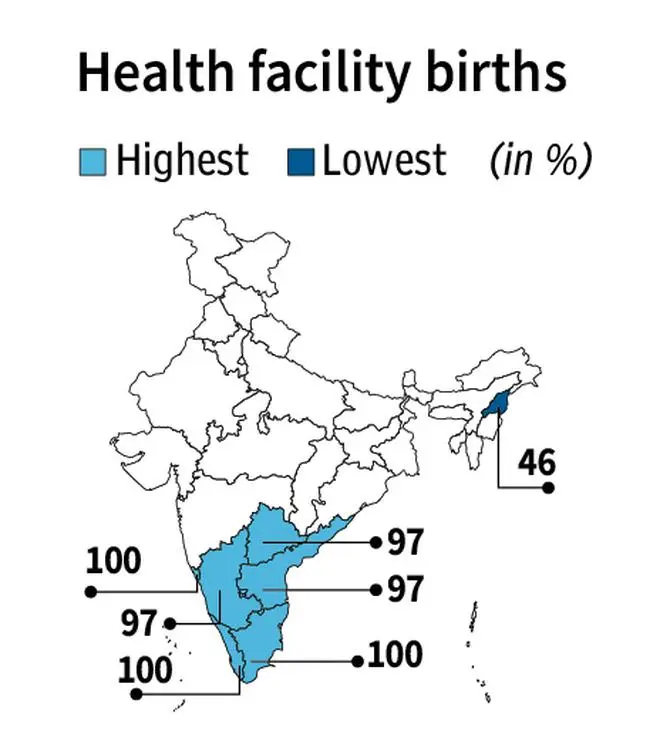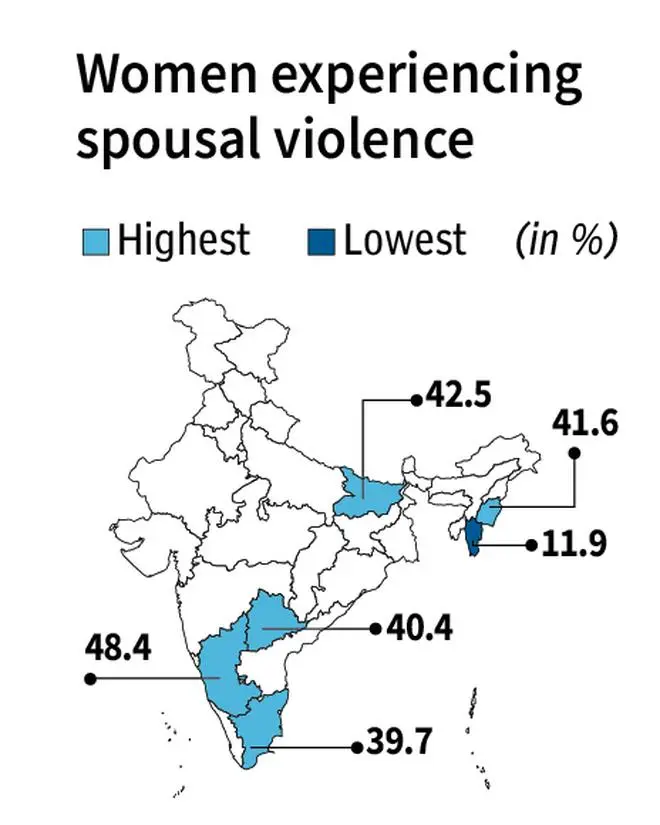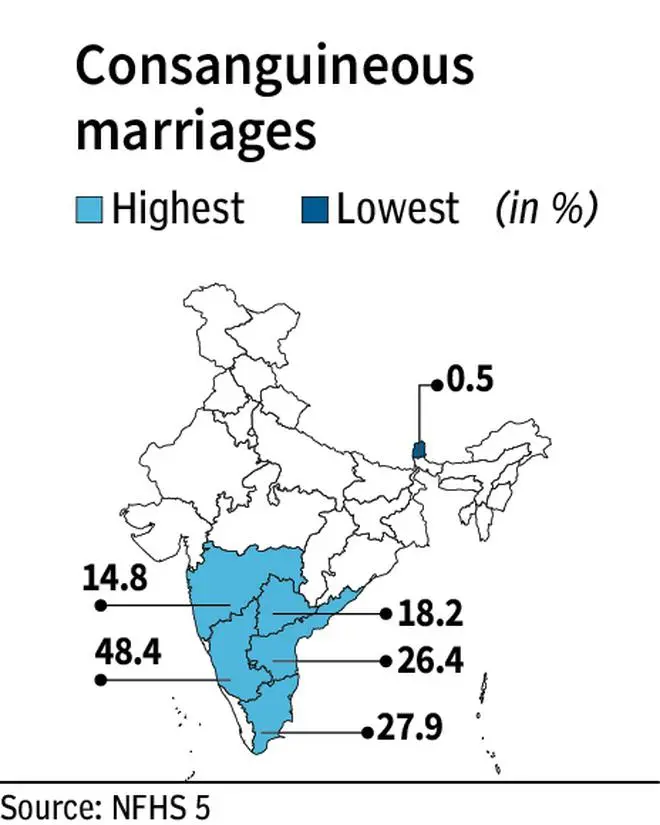The south side story is definitely not a grim one. But it may be a bit of a stretch to call it a shining success.
To understand the divide between the southern States and the rest of India, we compared a few health and social parameters from the National Family Health Survey 2019-21.
Falling birth rate, mortality
India’s crude birth rate (annual number of live births per 1,000 population) has been falling continuously. While the national average was 17.1 in 2019-21, it used to be 19 during 2015-16 and 23.1 during 2005-06, indicating a fall in the rise of population. The southern States are contributing a lot towards this. The birth rate was less than 15 in Kerala, Karnataka, Tamil Nadu and Andhra Pradesh in NFHS 5. In Telangana, it was 15.3. On the other side, the birth rate in Bihar, Meghalaya and Uttar Pradesh ranged between 20.5 and 25.9.
India has a child mortality rate (the probability of a child dying before reaching the age of five, out of 1,000 births) of 41.9 according to the latest survey. However, the proportion is not uniform across States. For instance, in Uttar Pradesh, it is 59.8, followed by Bihar (56.4) and Chhattisgarh (50.4). In Kerala, it is just 5.2, the lowest in the country. It remains below 30 in Tamil Nadu, Telangana and Karnataka. In Andhra Pradesh alone, it is 35.2.
The proportion of women who received a doctor’s assistance while delivering a child was also high in the South at above 84 per cent. It was 97.9 per cent in Kerala, the highest in the country. However, it was less than 50 per cent in Madhya Pradesh, Bihar, Chhattisgarh, Jharkhand, Uttar Pradesh and Nagaland.

The other side
While the South shines in multiple aspects, there are places where the advancement is not that great. For instance, almost 50 per cent of the women in Karnataka (highest in the country) said they have experienced violence (physical, sexual or emotional). The proportion is as high as 42.9 per cent in Tamil Nadu and 40.1 per cent in Telangana. In Andhra Pradesh, it is 35.2 per cent. Kerala, the exception here, had only 9.7 per cent of the women saying they experienced violence.
While the proportion is high in Bihar (42.5 per cent) and Uttar Pradesh (37.3 per cent), it is quite low in Himachal Pradesh (10.7 per cent), Gujarat (14.3 per cent) and Punjab (15.3 per cent). The case is similar when it comes to spousal violence experienced by women, too.

Though the proportion of female infanticide is quite low in the country, the survey shows that the practice still exists. According to NFHS 5, it has happened recently in 22 States. It adds that the proportion of women who marry a blood relative is the highest in Tamil Nadu, Karnataka, Andhra Pradesh and Telangana, in that order.
Data scientist Nilakantan RS, who recently penned a book titled ‘South vs North: India’s Great Divide’, said consanguine marriages may not be a bad thing. “One of the things that literature has found about marrying a blood relative is that if she knows the family, her agency is actually greater.” He added that fast urbanisation among the southern States may have social consequences.






Comments
Comments have to be in English, and in full sentences. They cannot be abusive or personal. Please abide by our community guidelines for posting your comments.
We have migrated to a new commenting platform. If you are already a registered user of TheHindu Businessline and logged in, you may continue to engage with our articles. If you do not have an account please register and login to post comments. Users can access their older comments by logging into their accounts on Vuukle.